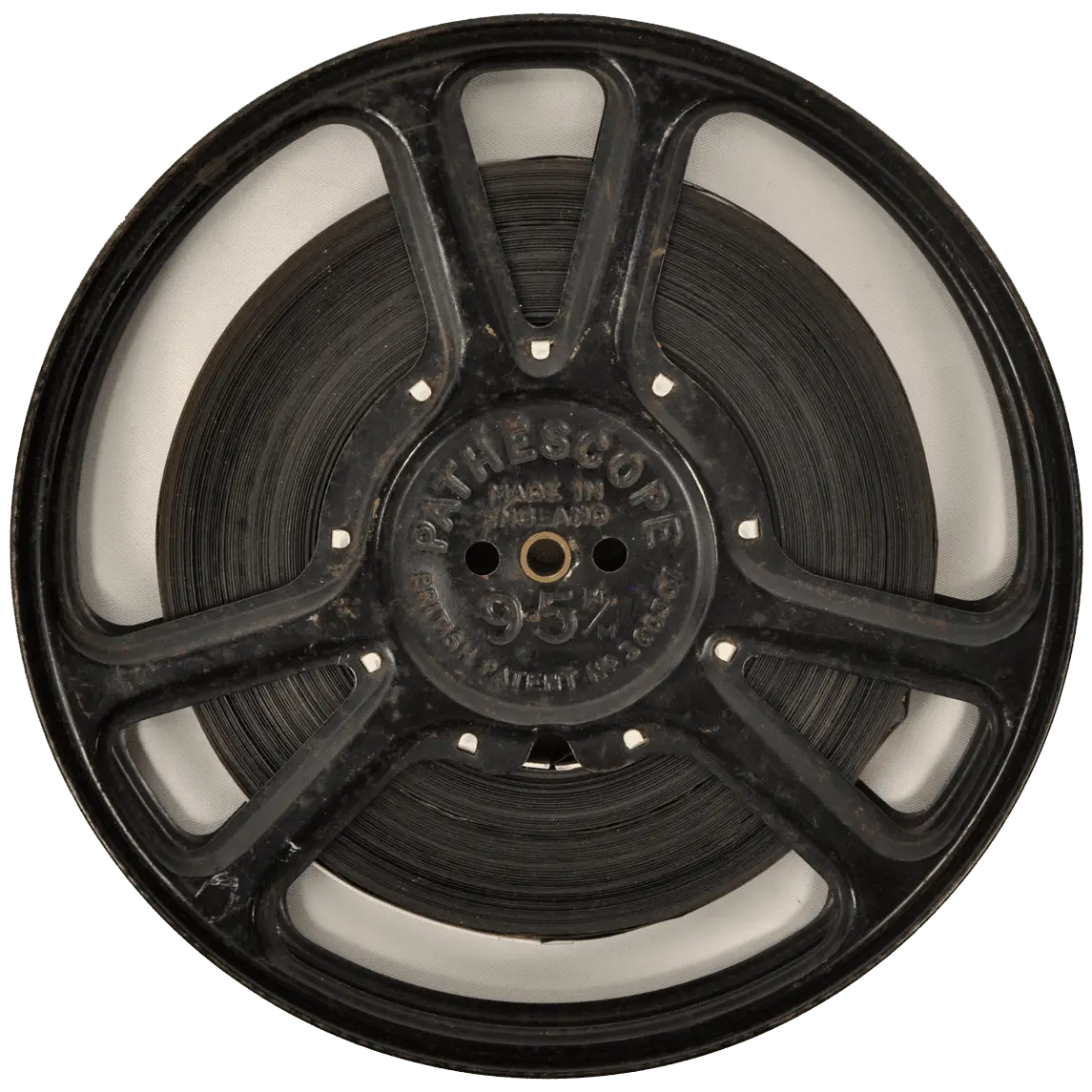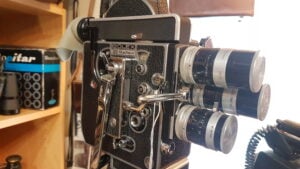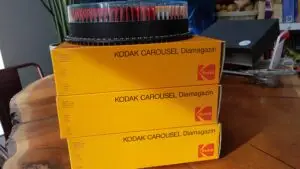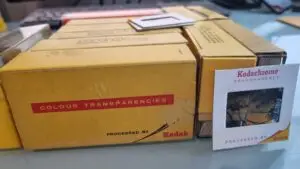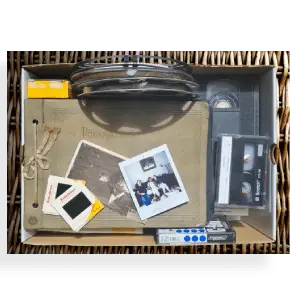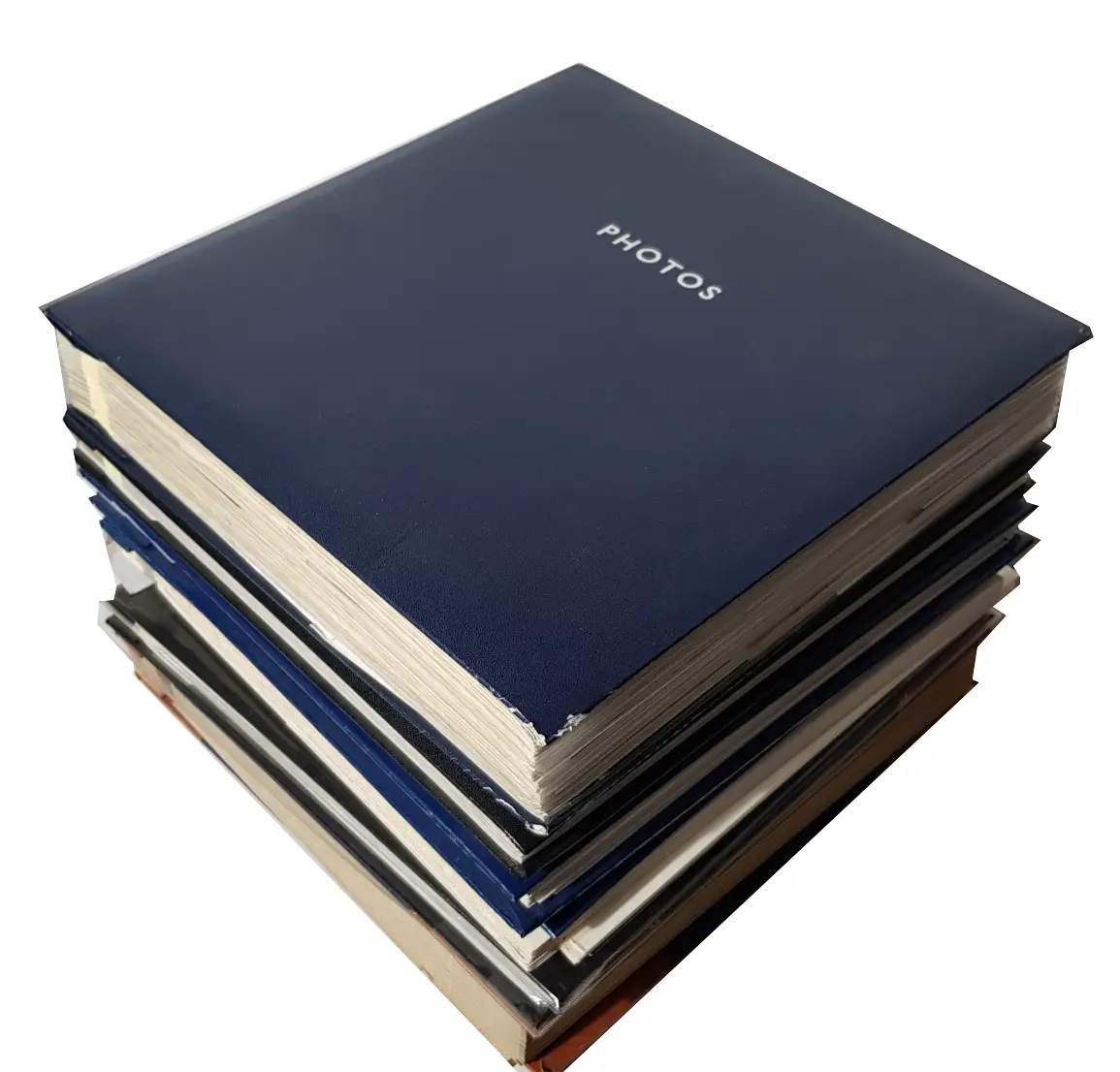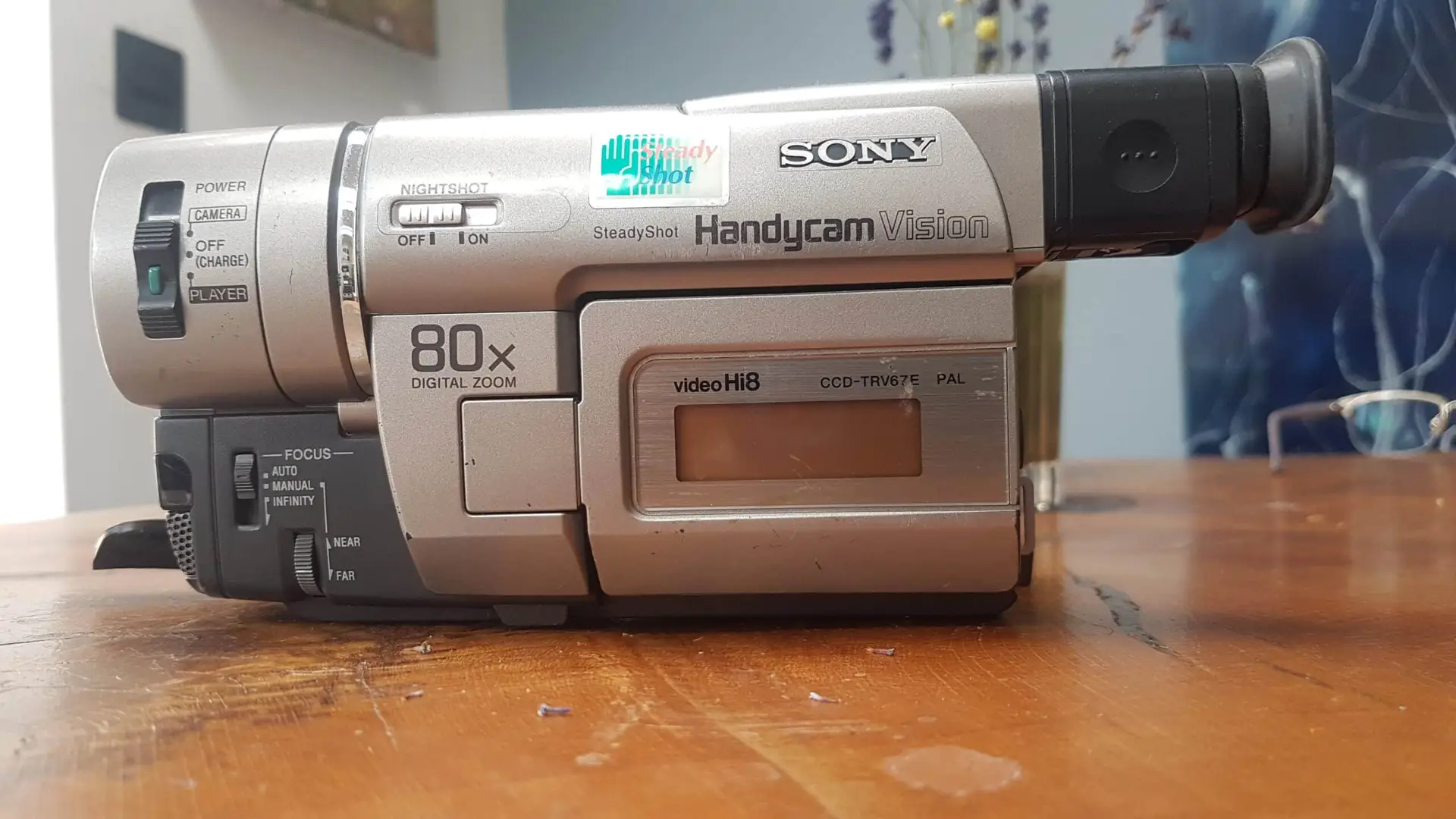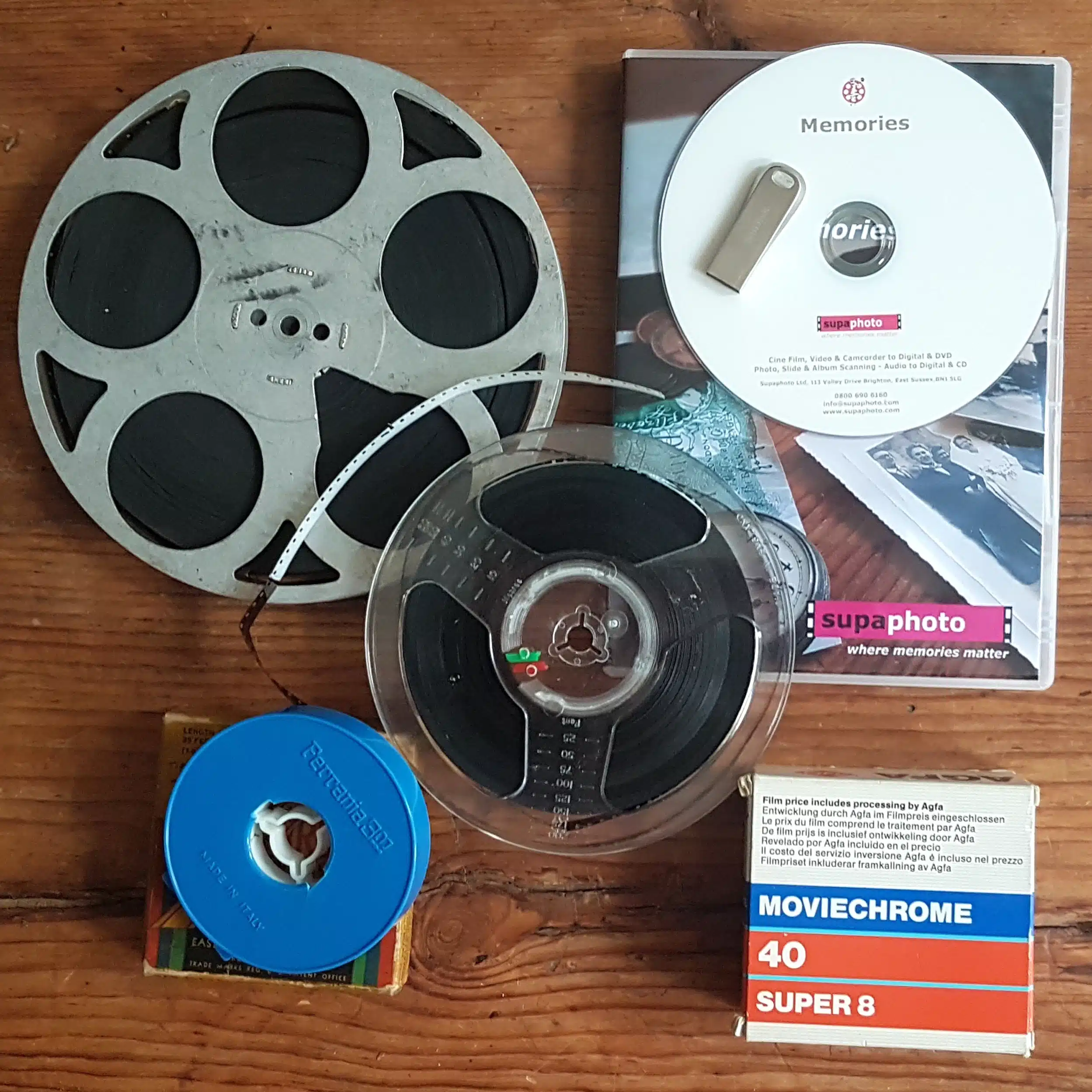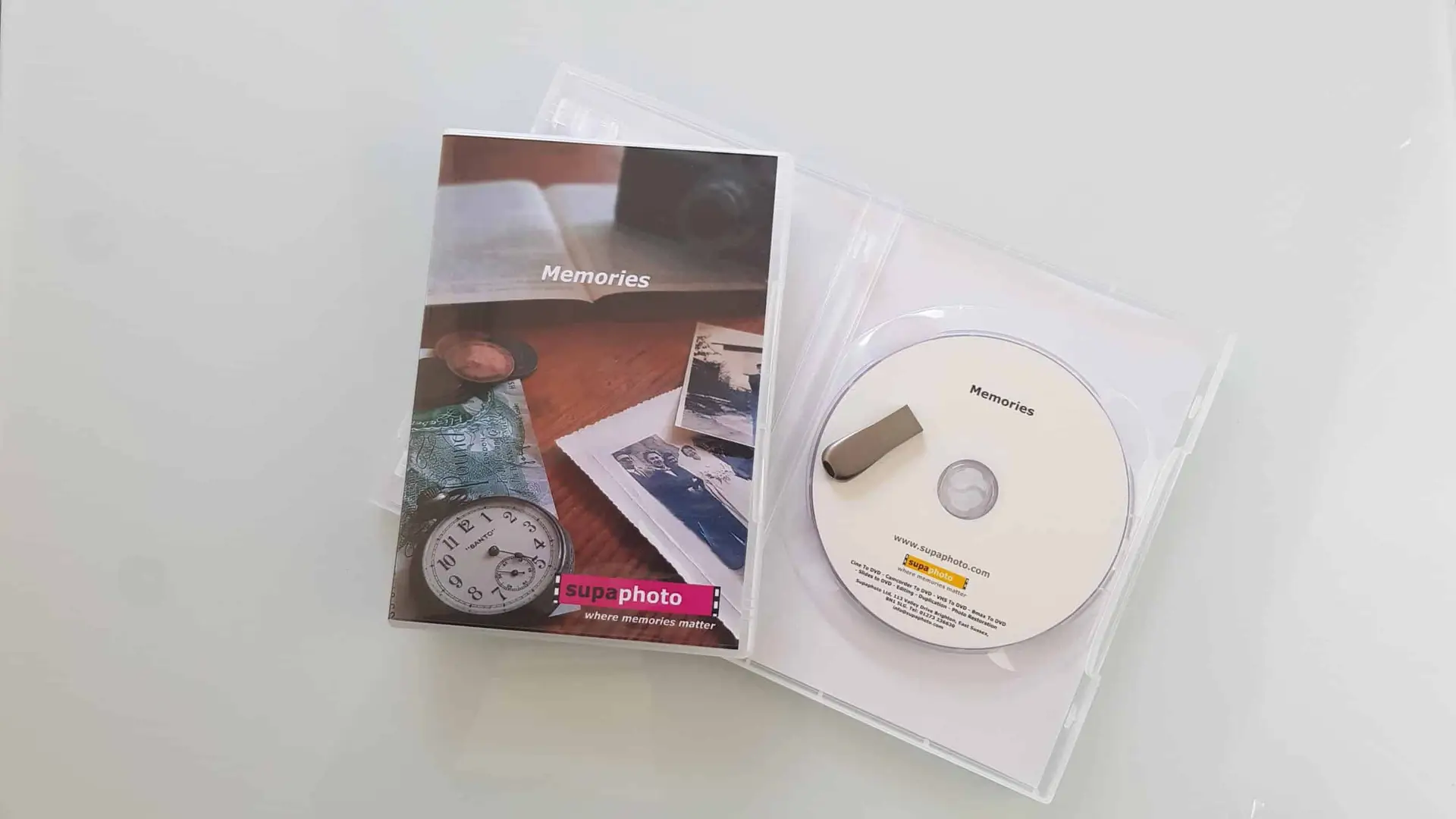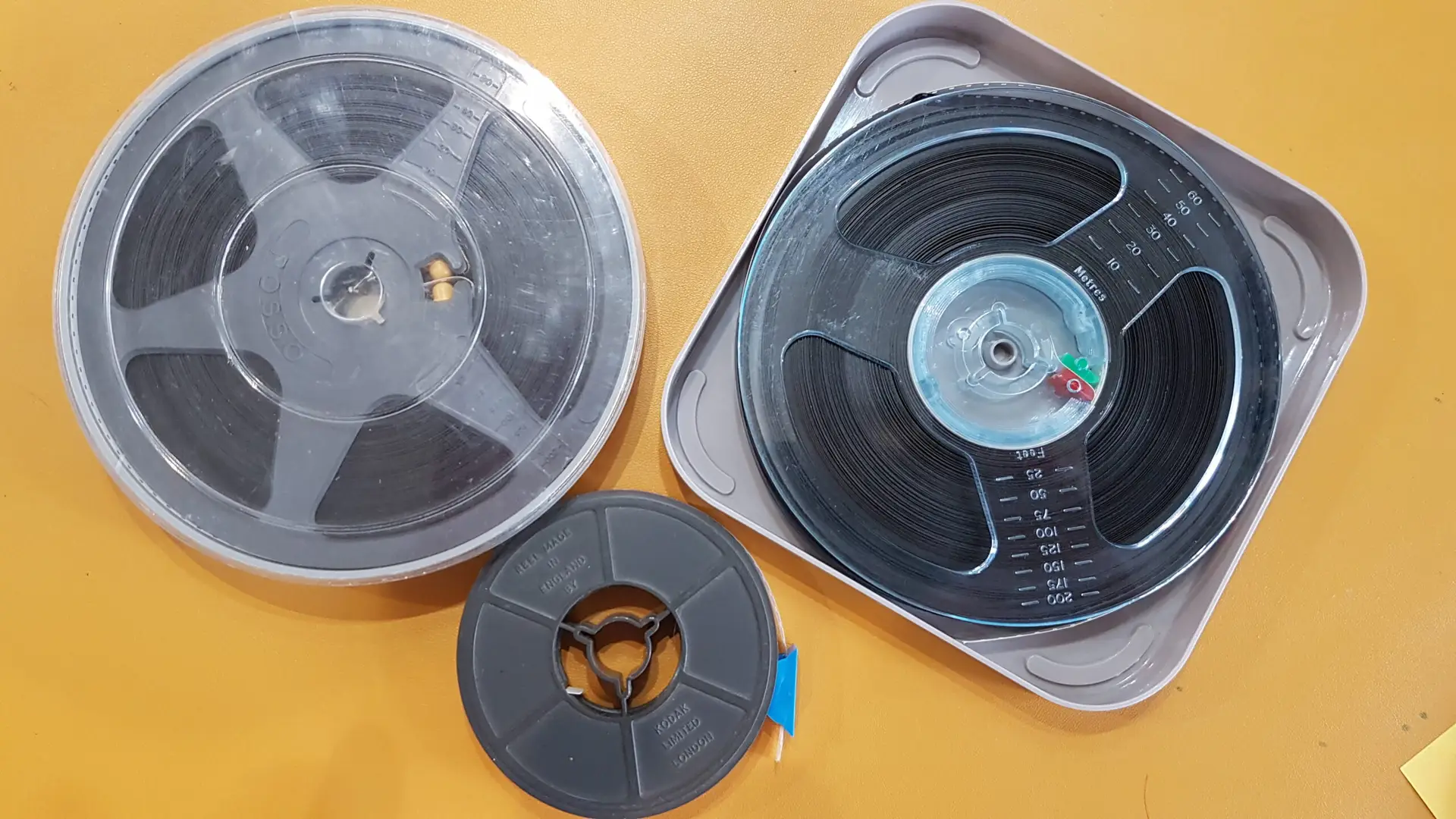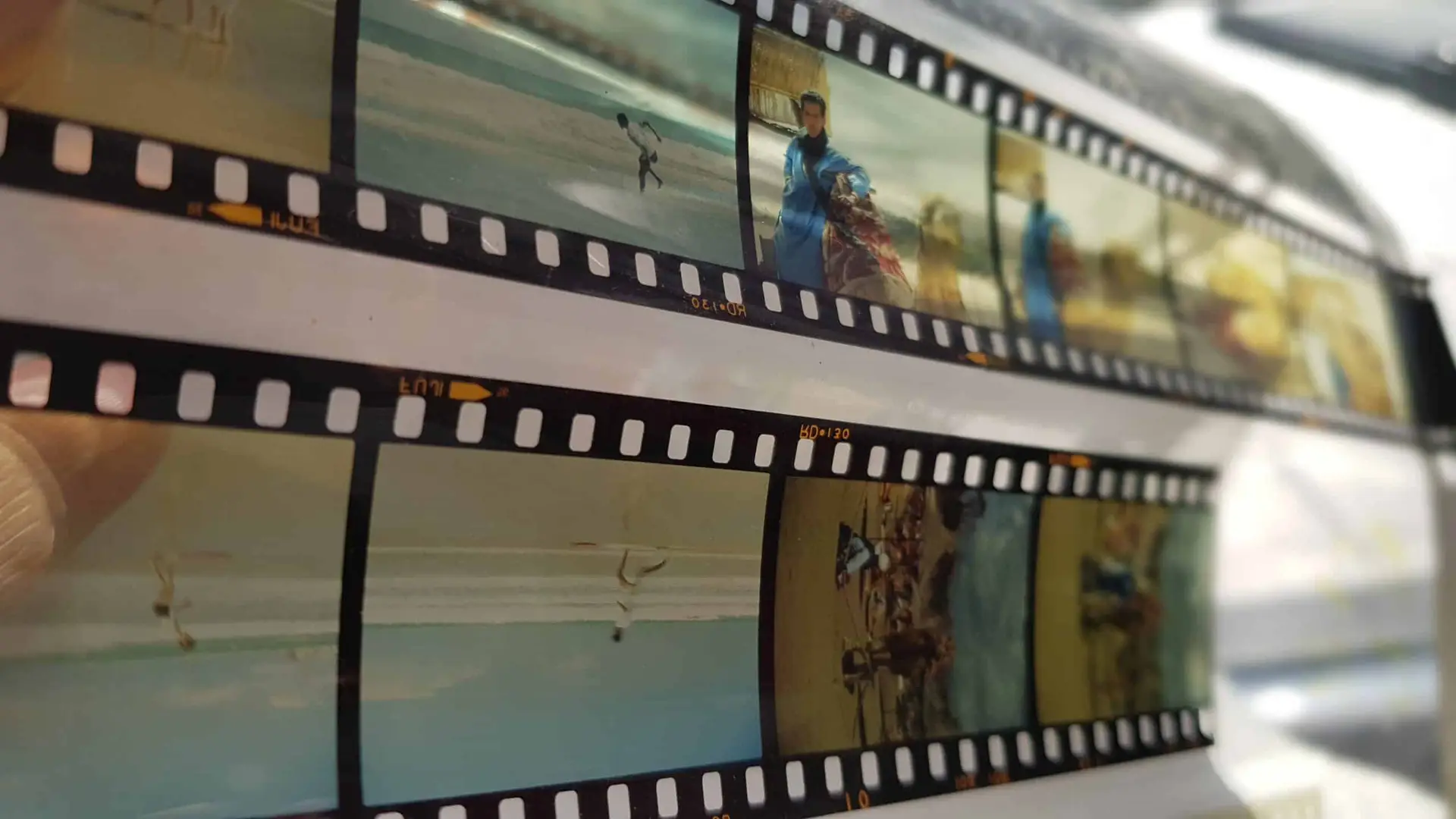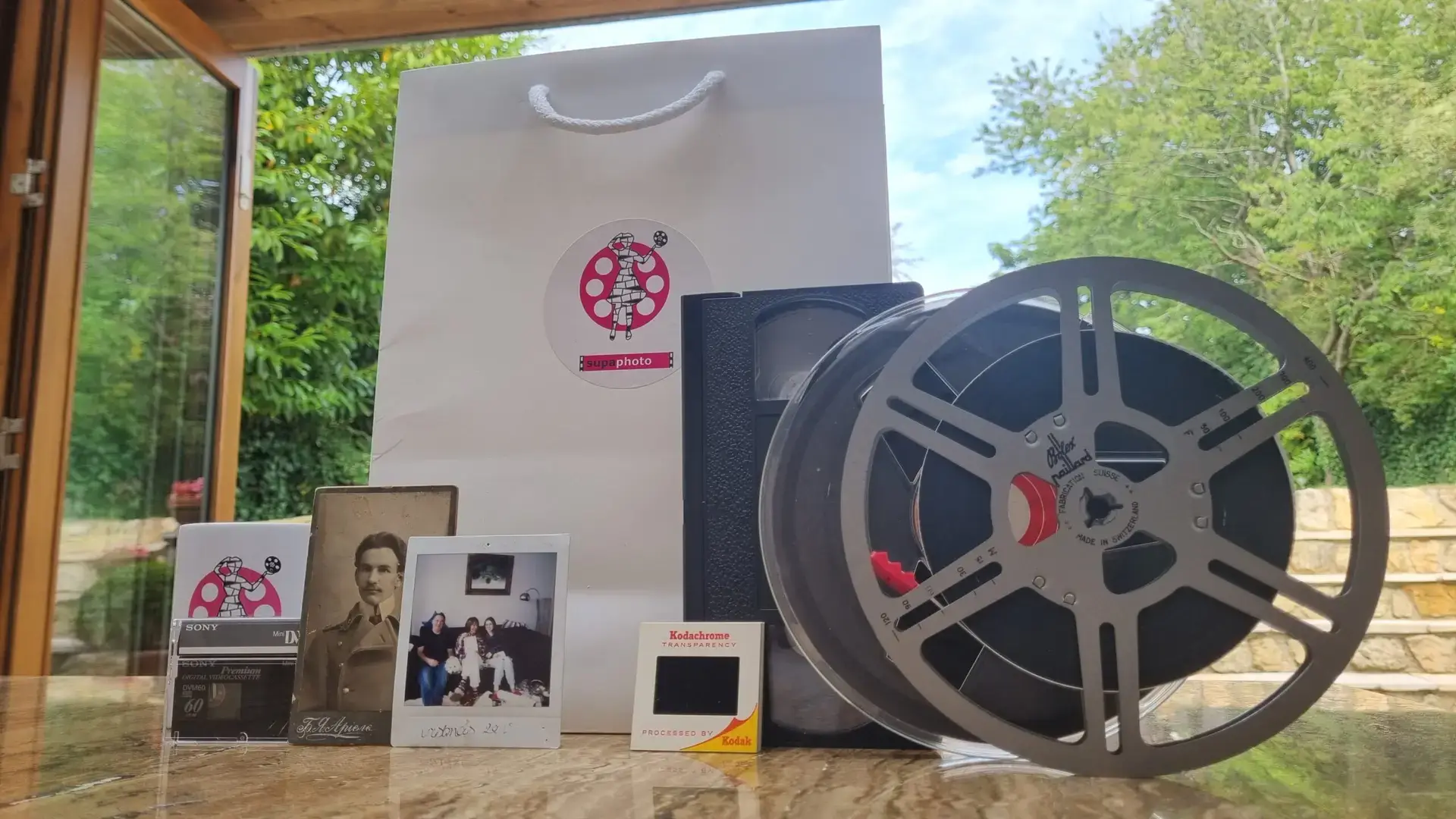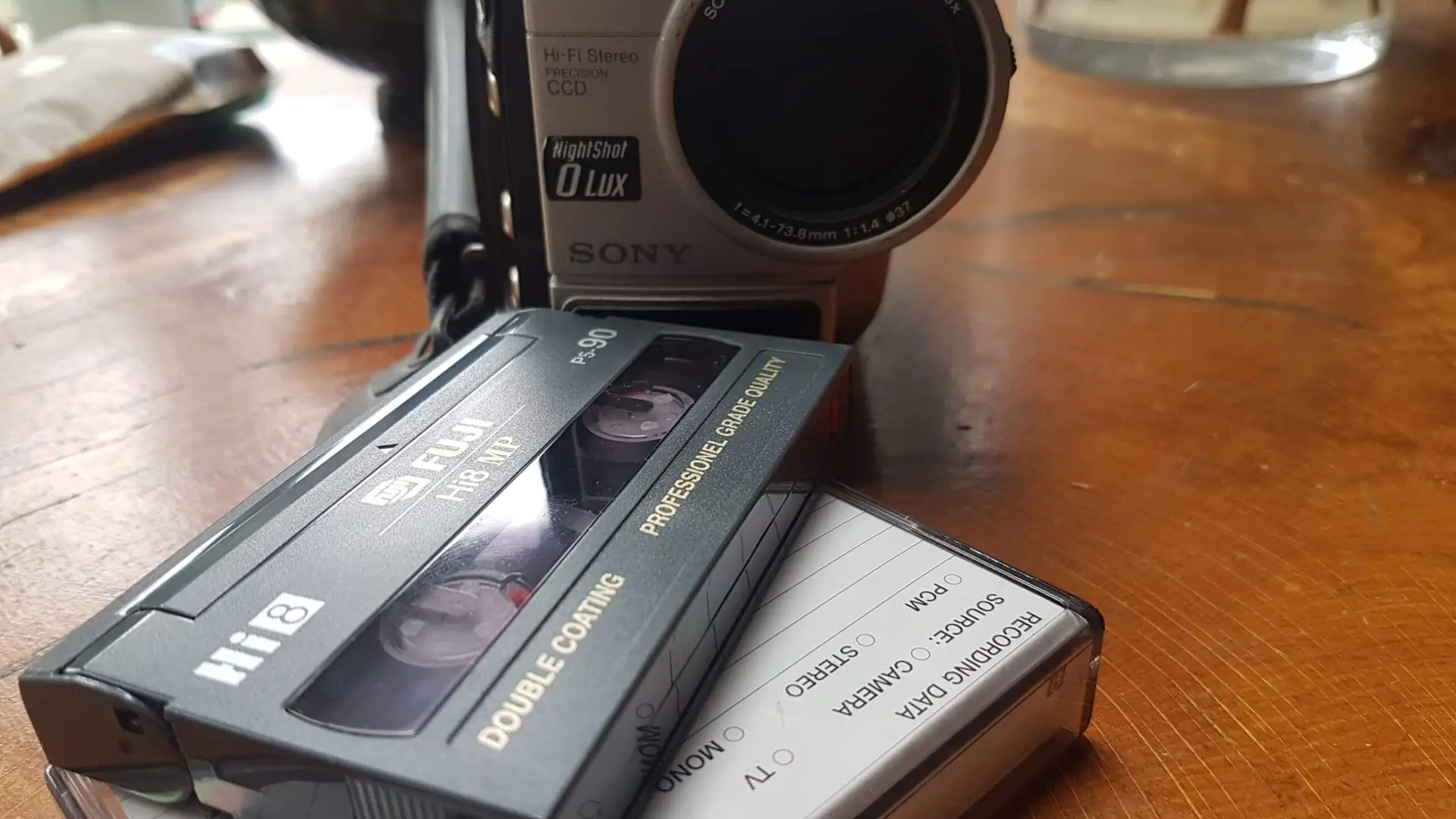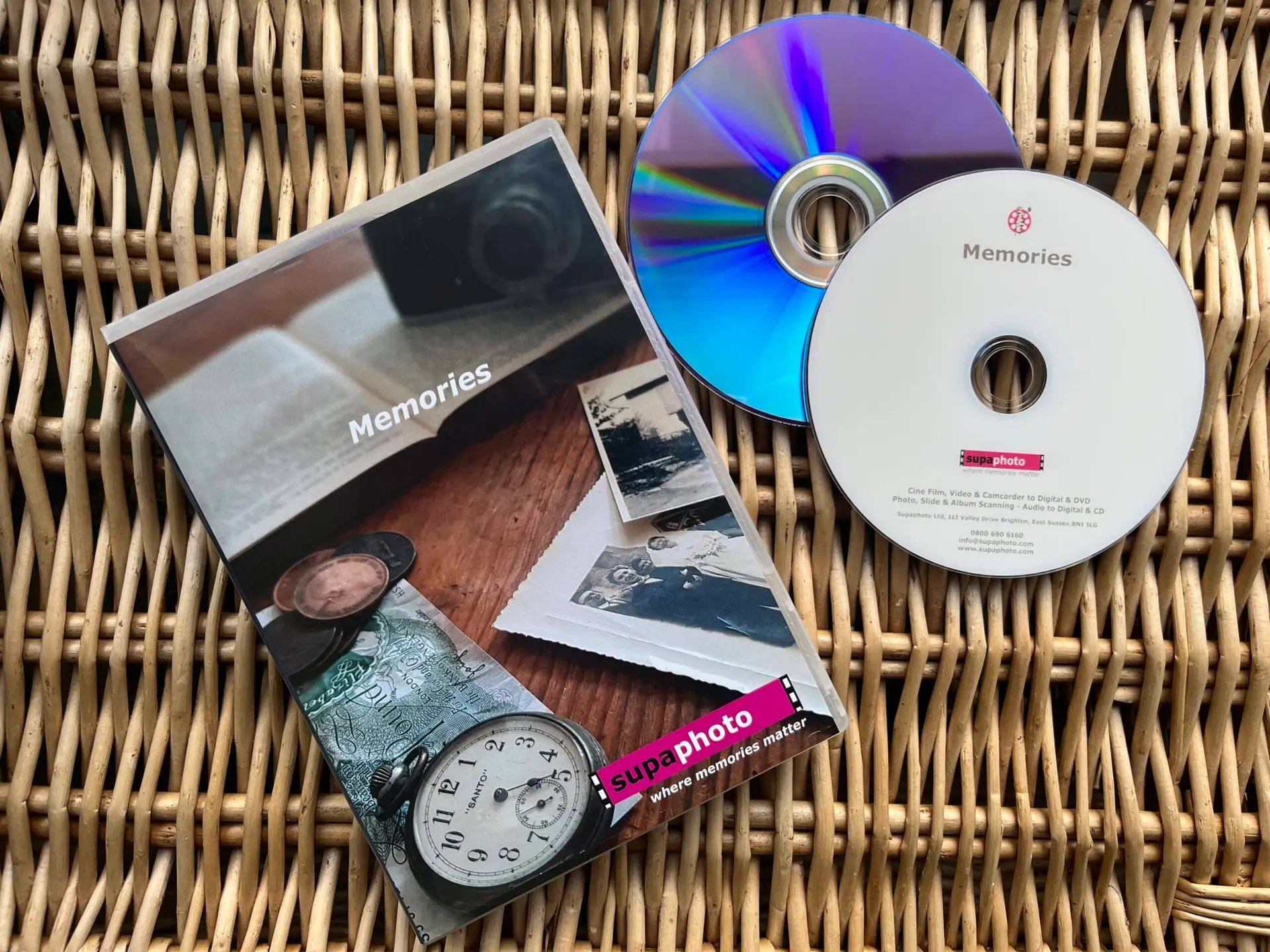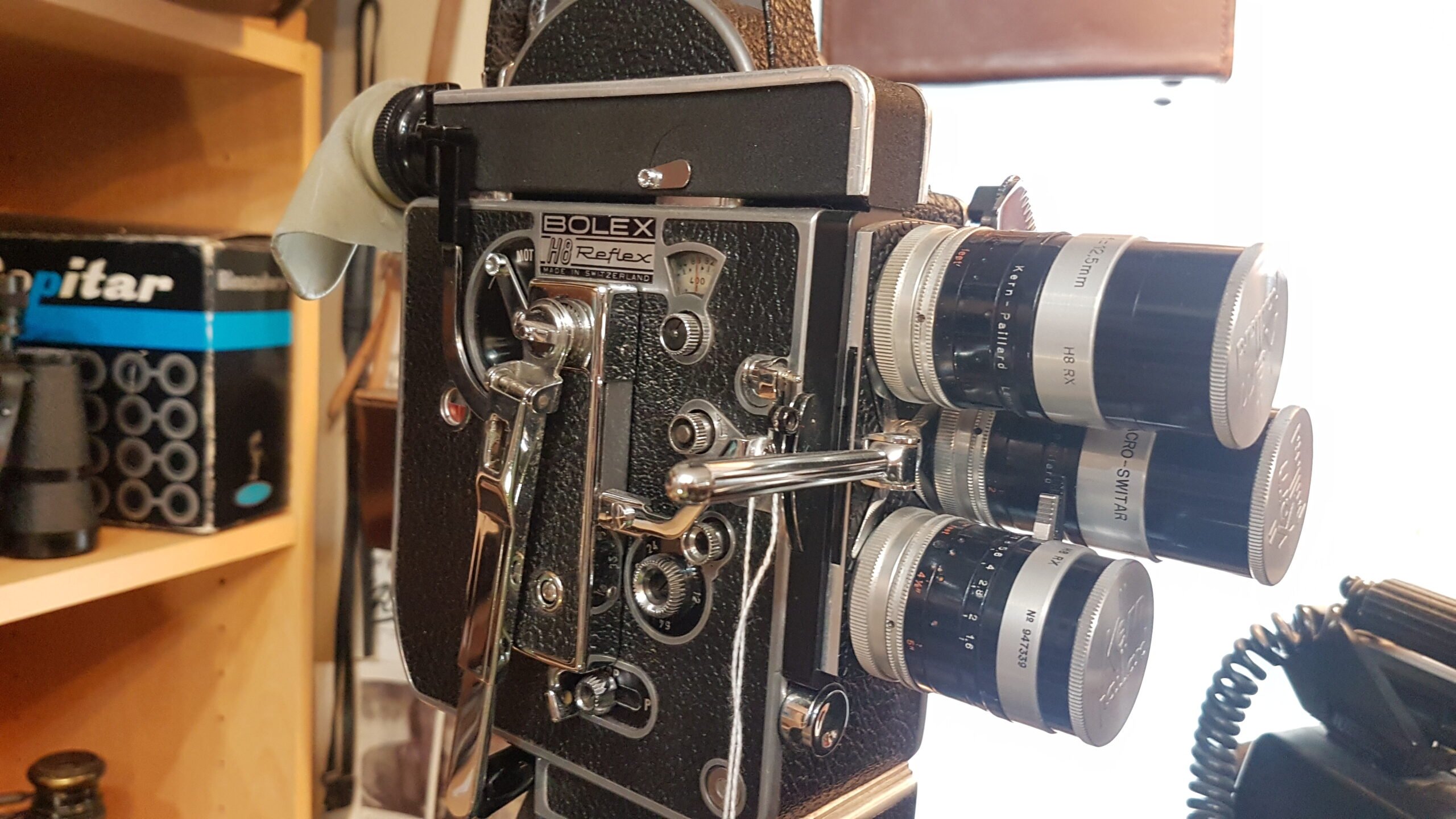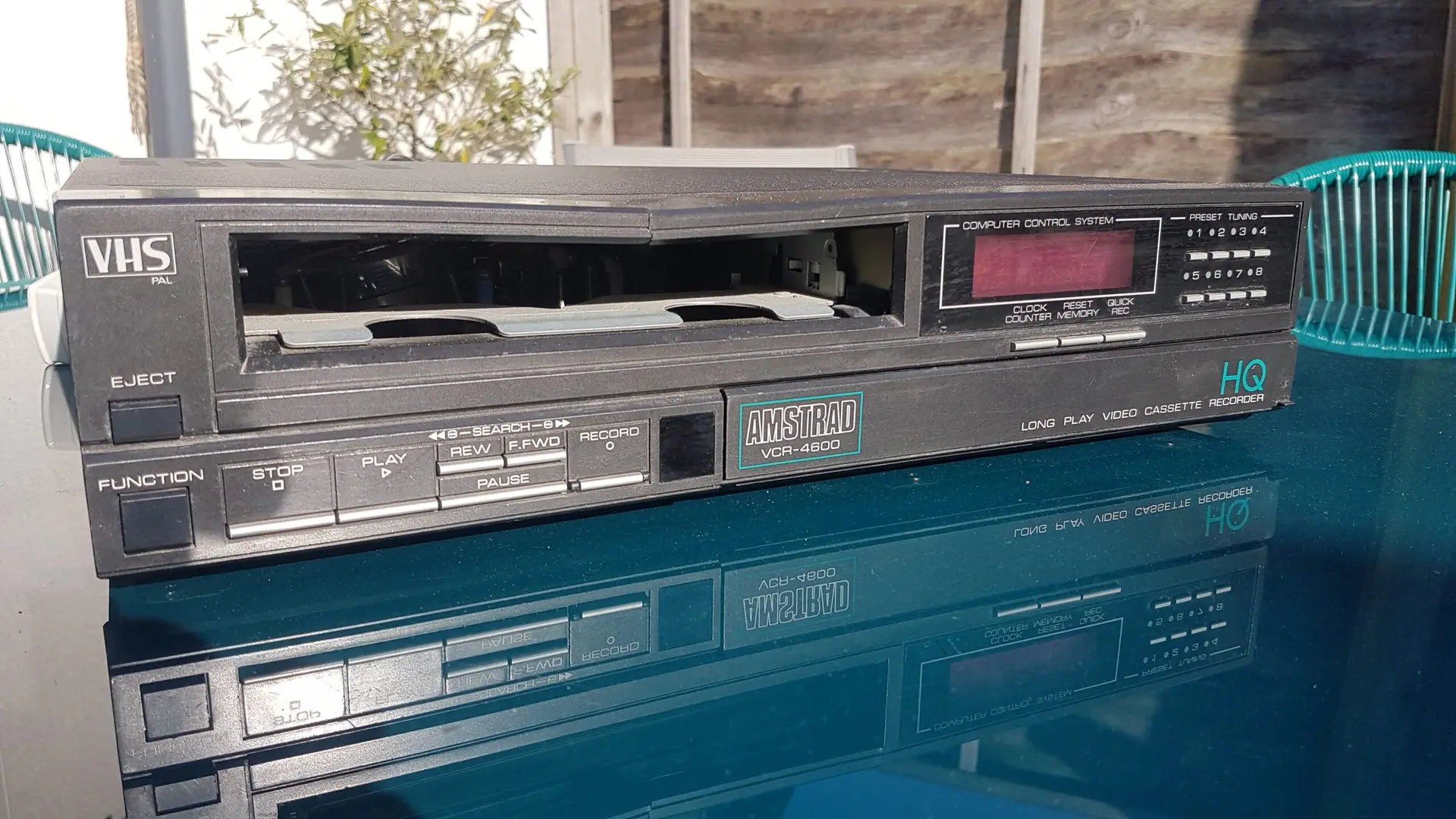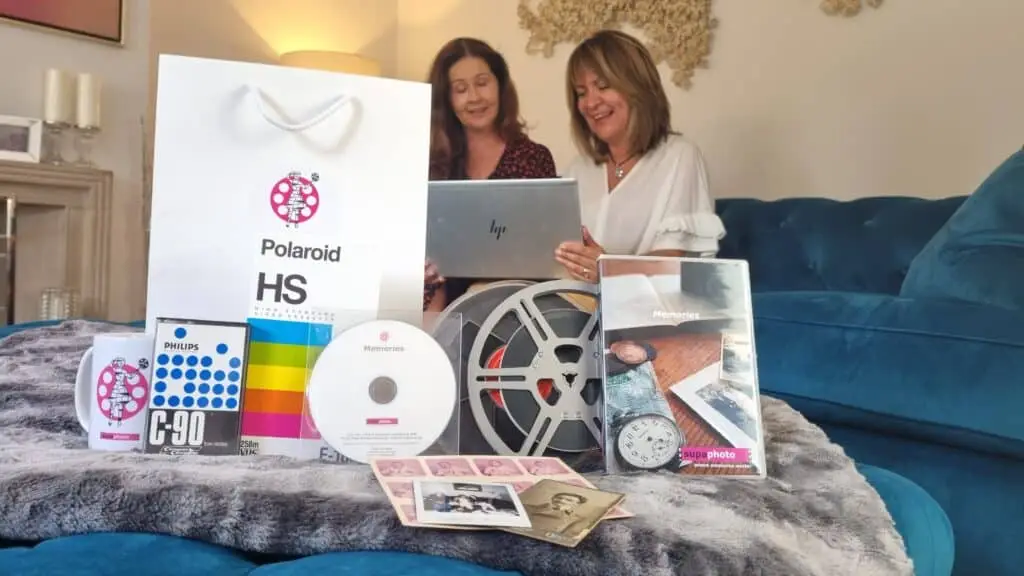In today’s world, we are presented with an array of options when it comes to home theatre sound systems and screen sizes, each offering varying levels of image quality. This might lead us to believe that the desire to recreate the cinematic experience at home is a recent trend. However, the pursuit of replicating cinematic projection of moving images has been present since the inception of cinema itself. It wasn’t until the emergence of Pathé’s 9.5mm film and its projection system that an accessible and suitable home movie setup became a reality. If you have this strange film with holes down the centre and you are considering transferring 9.5 mm cine film to dvd, then you may wish to spend some time initially understanding it’s amazing history first.
9.5mm Projectors
The success of the 9.5mm projector paved the way for the creation of an affordable and user-friendly 9.5mm camera, democratising both filmmaking and projection technology for the general public. While the 9.5mm format didn’t attain the widespread popularity of other narrow film gauges, its significance in advancing amateur filmmaking and projection should not be underestimated.
The earliest method for viewing moving images was the Edison Kinetoscope introduced in 1889. This device featured a wooden cabinet housing a 35mm film loop, observed through a magnifying glass atop the cabinet. Although it provided entertainment, the limitations of short film sequences and single viewer capacity left much to be desired.
The Lumière brothers revolutionised this with the introduction of a mass-audience projector in 1895, marking the birth of modern cinematic projection. As early as 1897, advertisements for home amateur projection systems began to appear. Among the pioneers was the Watson Motograph, which utilised 35mm nitrate film and offered over 1,000 short film subjects. Yet, users of early home cinema systems quickly realised the impracticality of 35mm due to its bulkiness, cost, and safety concerns. This prompted various companies to explore narrower film gauges and different film materials. Although they are a sight to behold, they are not recommended to for 9.5 mm cine film to dvd as you’re better off with a company that uses dedicated machines like Supaphoto Ltd.
First Experiments
The Birtac combination camera/projector, developed by Birt Acres in England, was the first to experiment with a narrower film gauge. By splitting 35mm nitrate film in half, Acres introduced 17.5mm film. However, the combination of nitrate film and the gas mantle used for projection posed safety risks. Another British firm, Wrench, also delved into this area in 1899, employing 17.5mm film. Instead of splitting perforated 35mm film, they divided non-perforated film and added perforations between frames.
In France, narrower gauges were being explored for use in cameras and projectors. The 1900 Pocket Chrono camera used 15mm film with central perforations, and the Mirographe camera/projector employed 20mm film with notches instead of perforations. Despite their innovation, these early attempts at home movie projection failed to captivate consumers and were soon forgotten. It wasn’t until 1922 that Charles Pathé’s 9.5mm film projector truly revolutionised home cinema viewing, making it both impressive and affordable.
The Amazing of Charles Pathe
By 1922, Charles Pathé and his company had already established themselves as leaders in the global film industry. Originally known for producing economical phonographs under the name Le Coq, Pathé had evolved into a film powerhouse with cinemas, camera and projector manufacturing, film production studios, and more. His aspiration was to bring the cinematic experience into people’s homes, much like his phonographs had done with music. A prior attempt by his company to enter the home movie projection market resulted in the satisfactory but costly 28mm KOK projector in 1912. The outbreak of World War I interrupted further research and development on narrow film gauge projectors, but these efforts resumed once the conflict concluded. This led to the release of the Pathé Baby 9.5mm projector in 1922, marking a significant milestone in home cinema history.
The Pathé Baby projector quickly achieved success due to its affordability, manual cranking operation, user-friendly design, and an extensive selection of 30-foot condensed films from the Pathé library. The 9.5mm film utilised by the Pathé Baby was crafted from non-flammable 35mm film stock, making it a secure and appealing choice for home cinema usage.
The process involved slicing off the edges of 35mm film where the perforations were located, resulting in three equal strips of 9.5mm film with a central perforation between frames.
These strips were presented in sealed cartridges for easy loading and automatic threading. The film prints included notches in the title frames, triggering a mechanism in the projector to pause the film, allowing viewers to read the text. This innovation reduced the need for frames dedicated to title cards. A 300ft reel of notched 9.5mm film equated to 1,000ft of 35mm film. The Pathé Baby introduced a novel home cinema market, and within a year, it would also place filmmaking tools in the hands of the public.
In 1923, Pathé adopted the same cartridge technology for their new 9.5mm reversal film Pathé Baby camera. This camera, like the projector, featured affordable and user-friendly hardware and film cartridges. It was compact enough to be carried in a handbag and allowed for easy loading. Each 30ft reel could capture up to 70 seconds of action. Consequently, the means of filmmaking became accessible to a wider audience, leading to the emergence of a passionate community centred around 9.5mm. This community fostered the development of various equipment, accessories, guides, cameras, and projectors. While 9.5mm didn’t achieve the same level of success in the United States as it did in France and Britain, it persisted and evolved alongside larger gauge technology.
In 1938, Pathé introduced sound on 9.5mm film by allocating space at the edge of the frame for the soundtrack. This innovation led to the creation of new Pathé Baby Vox optical sound projectors and cameras, further empowering amateur filmmakers and projectionists with accessible and cost-effective film technology. However, the interruption caused by WWII affected the success of 9.5mm, allowing its narrow-gauge competitor, Kodak’s 16mm, to flourish due to its military applications.
After the war, production and development of 9.5mm film resumed, but in the 1950s, it faced competition from another narrow gauge, 8mm, and the burgeoning popularity of television. Pathé’s attempt to regain viewers with the introduction of the first 9.5mm widescreen format in 1955 didn’t yield the desired outcome. Eventually, Pathé ceased 9.5mm film production in 1960. Despite this setback, the enthusiasm of enthusiasts in various countries, particularly in Britain and France, kept 9.5mm film alive.
The mid-1960s witnessed a resurgence of interest in 9.5mm film, as individual enthusiasts formed groups like the 9.5 Association and Group 9.5 to share their passion. In the subsequent decades, these enthusiasts produced new equipment, film stock, and films. They employed creative methods such as developing film in bathtubs, converting 16mm film into 9.5mm using sewing machines, and crafting or modifying equipment for recording and playing 9.5mm film. Annual conferences further supported the preservation of 9.5mm film, ensuring its continuation and growth in popularity.
Although it didn’t achieve the widespread recognition of other narrow film gauges, the significance of 9.5mm film in advancing amateur filmmaking and projection remains undeniable. What initially aimed to establish a home market for cinema circuit films ended up democratising filmmaking and projection. While 9.5mm might not be well-known outside of archival circles or small gauge enthusiasts, its contributions to filmmaking and projection accessibility remain influential to this day—affordable equipment, user-friendly design, and easy access are legacies that endure.
9.5mm cine film these days is not commonly produced or readily available in the same way that other film formats like 8mm or 16mm might be. The 9.5mm format has been largely obsolete for many years, and finding new, unexposed 9.5mm film stock can be quite challenging.
However, there are dedicated communities of film enthusiasts who engage in collecting, preserving, and occasionally trading or selling 9.5mm films among themselves. These might be vintage films that have been used or old stock that was never exposed. Some organisations or individuals might have limited quantities of 9.5mm film available for purchase, but this would likely be a niche market with limited options. Along with undertaking work such as 9.5 mm cine film to dvd, specialist telecine companies like Supaphoto may also hold old 9.5mm reels.
Acquiring 9.5mm Film
If you’re interested in acquiring 9.5mm cine film, I recommend exploring online forums, film enthusiast groups, or websites that specialise in vintage film equipment and materials. There are many free resources out there to such as questions that are typically asked. Keep in mind that availability and pricing can vary significantly, and you might need to search diligently to find what you’re looking for.
Since my information might be outdated, I recommend checking with specialised film communities, vintage equipment shops, or online marketplaces for the most current information on the availability of 9.5mm cine film.
The emulsion of 9.5mm cine film refers to the light-sensitive coating that is applied to the film base. This emulsion is what captures the images when the film is exposed to light. In the context of 9.5mm cine film, the emulsion is a crucial component that determines the film’s sensitivity to light, its grain structure, colour rendering (in colour films), and overall image quality.
Emulsion
Emulsion technology has evolved over time, and different types of emulsions have been used for various film formats. In the case of 9.5mm cine film, particularly the black and white variety, silver halide crystals suspended in a gelatin layer make up the emulsion. These crystals react to light exposure, forming an invisible latent image. During film development, chemical processes turn this latent image into visible images, creating the frames that we see when the film is projected or viewed. When selecting a professional company to to convert 9.5 mm cine film to dvd, they should understand this piece since adjustments maybe be made during the post capture phase.
Colour films have multiple emulsion layers sensitive to different colours of light. The emulsions react to light of different wavelengths to create the various colour components that form a colour image. Colour films also employ different dye couplers and processes during development to produce the final colour images.
It’s worth noting that the quality and characteristics of the emulsion, along with the film stock’s age and storage conditions, play a significant role in the final image quality and the film’s overall visual aesthetics.
While information about film emulsions is generally available, specifics about the availability of 9.5mm cine film emulsions would depend on the limited market for this format. If you’re interested in working with 9.5mm cine film or obtaining information about its emulsions, I recommend reaching out to specialised film communities, vintage equipment shops, or film preservation organisations for the most up-to-date information .
9.5 mm Cine Film to DVD
Perhaps you are reading this because you have some film and are thing of transferring it? 9.5mm cine films are very rare nowadays. To transfer 9.5mm film, you will need a dedicated company such as Supaphoto.
Converting 9.5mm cine film to DVD offers the advantage of the extended lifespan that digital formats provide. Concerns about deterioration or damage over time become a thing of the past with your DVD or MP4 copy. Whether your cine film undergoes degradation or not, having a digital backup ensures continued access to your footage. Services for 9.5mm cine film to dvd is a specialist field and you are always best dealing with a dedicated company to this area.
Our extensive experience in digital frame-by-frame scanning guarantees high-quality service at a reasonable cost. What’s more, your cine reels will be returned alongside your new DVD, granting you the liberty to enjoy and use them freely. This way, you’ll have a secure backup copy in case unforeseen circumstances arise. Feel free to get in touch with us today for more information on transforming your cine film into a digital format.
And remember, after converting your films that storage of the originals is important too. Make sure too that you have a digital backup. Convert your old cine films to DVD, USB or cloud with Supaphoto – the number one video digitisation service in the UK.


